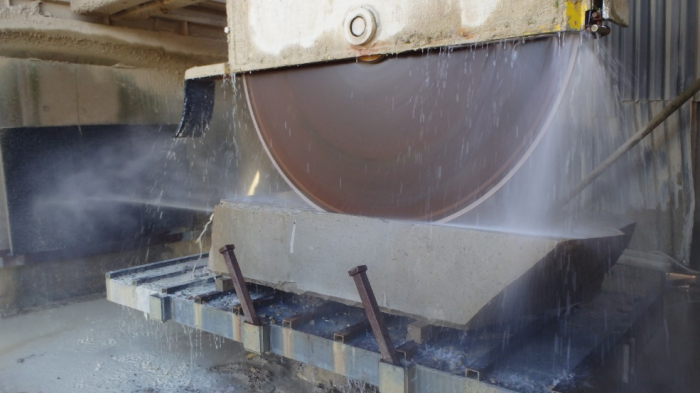The law states that work machinery placed on the market must be designed for low noise emissions. Manufacturers/suppliers must also provide warnings of the noise risk, and make a declaration of the levels of noise. This briefing outlines the steps that manufacturers can and should take to meet these requirements.
The law being referred to here is the Supply of Machinery (Safety) Regulations 2008, which apply to work machinery supplied into the UK market[1]. For noise, a manufacturer[2] must design and construct the machinery so that noise is reduced to the lowest level.
Yes, really.
In the same way that they require manufacturers to, for example, design out or minimise the risk of physical harm or injury from use of a machine, or fire/explosion risk, these Regulations also apply to noise risks (as well as other ‘emissions’ such as vibration, or radiation). The matters to be addressed by manufacturers are referred to as the Essential Health and Safety Requirements (EHSR).
Some might consider the physical hazards from a machine (which may lead to “blood on the floor”) to be a greater priority than the hazards that damage people more slowly, such as noise. This would be wrong; after all, there are not two sets of requirements: “Essential” and “Not-so Essential”.
Why do we have these Regulations?
Because work machinery that is unsafe or could cause unacceptable harm during its use should not be on the market.
Low noise design
The requirement for low-noise design is set out in EHSR 1.5.8, which states “Machinery must be designed and constructed in such a way that risks resulting from the emission of airborne noise are reduced to the lowest level, taking account of technical progress and the availability of means of reducing noise, in particular at source.”
The key points here are the preference for noise control ‘at source’, and ‘technical progress’ meaning ‘state of the art’[3].
It is best to integrate noise control into the design and development stage of the machine. Design engineers will recognise that a methodical approach works best:
- identify and rank the major sources of noise in the machine;
- analyse the mechanisms of noise generation:
for example, turbulence in airflow, cavitation in valves and pumps, impacts, meshing teeth, inertial forces, friction, magnetically-induced noise;
- determine the path(s) from the noise source to the receiver:
for example, airborne, structure-borne and radiating from surfaces;
- evaluate the optimal combination of possible noise control measures:
possible noise control measures are myriad, and a recursive element to the design process is likely to be required.
Help is at hand for this approach, in the form of BS EN ISO 11688-1:2009 Acoustics. Recommended practice for the design of low-noise machinery and equipment. Part 1: Planning. This is a machinery ‘harmonised standard’[4], that is, one that supports the legislation; harmonised standards allow the manufacturer a certain ‘presumption of conformity’ with the relevant EHSR if properly followed. Figure 1 shows an example of the type of information contained in this useful standard.
Figure 1. Basic noise generation (reproduced from BS EN ISO 11688-1:2009
Those wishing for more detailed technical information on low-noise design may wish to consult Part 2 of the above standard, BS EN ISO/TR 11688-2:2001 Introduction to the physics of low-noise design. It must be said however that this standard contains a good deal of theory as well as practical advice, and as such may not be for the faint-hearted.
It’s important to recognise that the concern is for the noise produced by the machine during real and intended use. If, for example, the machine chips potatoes, shreds bulk waste or prints leaflets, it would be foolish not to consider the noise generated by these actions in the design.
There may be a short-cut to the above first-principles approach. If a ‘type-C’ safety standard for a machine or type of machine exists, then it may identify the major noise-generating mechanisms. It may also identify the appropriate noise reduction measures, and (but often only) direct the reader to the above BS EN ISO 11688-1:2009. Again, if the safety standard is a machinery harmonised/designated standard (one designated as supporting the legislation) then it allows the manufacturer a presumption of conformity if properly followed. Of course ‘properly followed’ means more than simply listing the standard in the Declaration of Conformity. There are many machine-specific safety standards, although not one for every type or class of machine. The use of these standards by manufacturers is voluntary.
The question might be asked: has a state of the art low-noise design been achieved? This is not determined by what noise control measures have been applied, but by the result – how much (or little) noise is produced. The law allows this to be tested by comparison, as illustrated by the following text completing EHSR 1.5.8: “The level of noise emission may be assessed with reference to comparative emission data for similar machinery.” Perceptive readers will spot the problem here. Manufacturers might wish to consider the potential market advantage in leading the pack on lower noise machines, rather than being ‘just as good’ (or even ‘just as bad’) as the competition.
Risk Warnings and Noise Declarations
The law requires the manufacturer to provide warnings of the risks that remain for a machine, despite the safe design measures taken. For noise, this warning of ‘residual risk’ must include providing specific information on the noise of, or caused by, the machine. These requirements are set out in EHSRs 1.7.2, and 1.7.4.
This noise level information is required to be provided in the instructions that must accompany the machine. It must also be included in any sales literature that describes the performance characteristics of the machine. Sales literature includes not only printed brochures or catalogues, but also electronic information such as on websites.
These noise declarations have two main purposes: to allow for the purchase of the quieter or quietest machine (noise information reviewed by the purchaser in advance) and to allow the noise risk to be managed should the machine be chosen.
There are three main noise parameters to consider. All of these can be determined by the manufacturer through measurements. They are:
- Sound power level:
this is a characteristic of the machine, representing the total noise produced;
referred to as LWA (A-weighted sound power level);
- Sound pressure level at workstations:
these represent the noise to which machine users could be expected to be exposed;
the time-averaged sound pressure level (LpA); and,
the instantaneous peak sound pressure level (LCpeak).
If comparing machines to determine which, fundamentally, are the quieter or quietest and would have the lowest noise impact on the workplace, the sound power (LWA) would be the parameter to use. Whenever comparing machines using noise levels, it is important to know what the machines were doing (operating conditions) when noise levels were measured.
There are standard methods for the measurement and determination of machinery noise, for example, BS EN ISO 3746:2010 for sound power, and BS EN ISO 11202:2010 for sound pressure. These harmonised standards describe the instrumentation and measurement locations and advise on the accuracy, measurement uncertainty and environmental corrections. Again, manufacturers are free to use or not use the harmonised/designated standards, although if not followed it would be expected that the noise measurement methods used produced results of no lower accuracy or reliability.
Measuring sound power level is more complex (or at least takes more effort), as it requires the taking of multiple measurements around a machine. The measurement standards contain useful information on measurement locations (see Figure 2). The sound power level is required to be declared only for higher noise hazard machines, with this cut-off level defined in the Regulations.
Figure 2. Example of sound power level measurement locations (reproduced from BS EN ISO 3746:1996)
An important consideration for manufacturers is the machine operating conditions during the noise emission testing. Official guidance is that the legal requirement is for operating conditions to be representative of the foreseeable conditions of use of the machinery. BS EN ISO 3746:2010 goes somewhat further, calling generally for operating conditions “representative of the noisiest operation in typical usage”, although deferring to machine-specific standardised noise test codes should they exist. This makes perfect sense when considering the previous point that the machine design for low noise should consider real and intended use, and that the noise declaration should be indicative of the likely impact and risk from the machine in use.
It is the case, although unfortunate in the authors’ view, that some harmonised machine safety standards allow for ‘no-load’ or ‘without product’ noise test operating conditions. Whilst it may be that for some machine types, ‘no load’ produces noise representative of typical use, this is likely to be rare. If a standard defines a ‘no load’ test that does not produce representative noise emissions, an argument could be made that the standard itself is ‘defective’ and at risk of having the presumption of conformity withdrawn or restricted. Again, the use of standards by manufacturers is voluntary, and there is nothing to prevent the manufacturer following the spirit of the law by using real/typical operating conditions for the noise test. The use of real test conditions is considered more likely to support those manufacturers that take a lead in bringing lower noise machines to market, and may well assist where purchasers undertake acceptance tests (see below).
Finally, there is even a harmonised standard detailing how the noise declarations should be set out – BS EN 4871:2009 Acoustics. Declaration and verification of noise emission values of machinery and equipment, and therefore little excuse for an inadequately presented declaration.
Certain work equipment, intended for outdoor use, must carry a label indicating its sound power level, and in some cases meet limits on the noise emitted. This is equipment to which the catchily-entitled Noise Emission in the Environment by Equipment for use Outdoors Regulations 2001 applies and includes, for example, builders’ hoists, chainsaws, dumper trucks and breakers. For the equipment covered, a declaration of sound power level to these Regulations also satisfies any sound power declaration requirement of the Supply of Machinery (Safety) Regulations 2008, that is to say, there is no requirement for two separate sound power level declarations.
What about the user of the machine?
By ‘user’ we mean the business (employer) purchasing the machine and putting it into use. The user has general duties under PUWER[5] (including to provide suitable ‘safe’ work equipment, and to ensure equipment meets the EHSR), and specific duties under the Control of Noise at Work Regulations 2005 (including to control noise risks by considering the choice of work equipment emitting the least possible noise taking account of the work to be done).
Users rightly can challenge manufacturers and suppliers in advance of purchase – to demonstrate the machine is safe, and the EHSRs have been met. In respect of noise, access to the noise emission information in advance of a possible purchase allows the quieter or quietest suitable machine to be purchased (or, at least, the noisiest ones to be ruled out), and gives the user knowledge of the risk to be managed should the machine be chosen. Acceptance tests by the user can include checks against the declared noise emissions.
Some might consider that a noisy machine is the end-user’s problem to manage. But where the machine could, or should, have been made quieter by design, taking account of technical progress, it is clear that the manufacturer bears the overriding legal responsibility.
About the authors
Tim Ward is a Principal Consultant with Finch Consulting, specialising in workplace noise and vibration risk management, and acting as an expert witness in industrial disease claims. He chairs the BSI committee EH/1/4 Machinery Noise, which is responsible for UK input to standardisation in the field of machinery noise. [email protected]
Howard Wheeler is a Senior Consultant with Finch Consulting, specialising in machinery safety and CE marking. He is a member of BSI committee MCE/3/-/4 Functional Safety of Machines 13849/62061 and the BSI review panel AMT/010/0-/02 on ISO 1021 for Robotics – Safety requirements. [email protected]
Finch Consulting can offer advice and consulting services in all aspects of work machinery safety and conformity, including practical safety integration, audit, interpretation of standards and legislation, and the assessment and declaration of noise emissions.
[1] We are discussing the law as it applies to the UK. The law is based on the ‘Machinery Directive’ (Directive 2006/42/EC), and the same requirements for machinery safety, etc. apply in all EU Member States and the EEA; this is the ‘level playing field’ approach aimed at ensuring safe work machinery without barriers to trade. The UK regulations continue to apply even after the UK has left the EU albeit with some minor amendments, and the same requirements will apply to UK machinery manufacturers selling products in the EU/EEA by virtue of the law in those countries.
[2] We use ‘manufacturer’ for simplicity, however, the duties under the Regulations fall to whoever puts the machinery onto the market, whether the UK manufacturer, authorised representative or first importer to the UK.
[3] HSE guidance on EHSR, https://www.hse.gov.uk/work-equipment-machinery/essential-require.htm [accessed 12/11/20]
[4] Now termed ‘designated standard’ in amended UK legislation
[5] The Provision and Use of Work Equipment Regulations 1998







